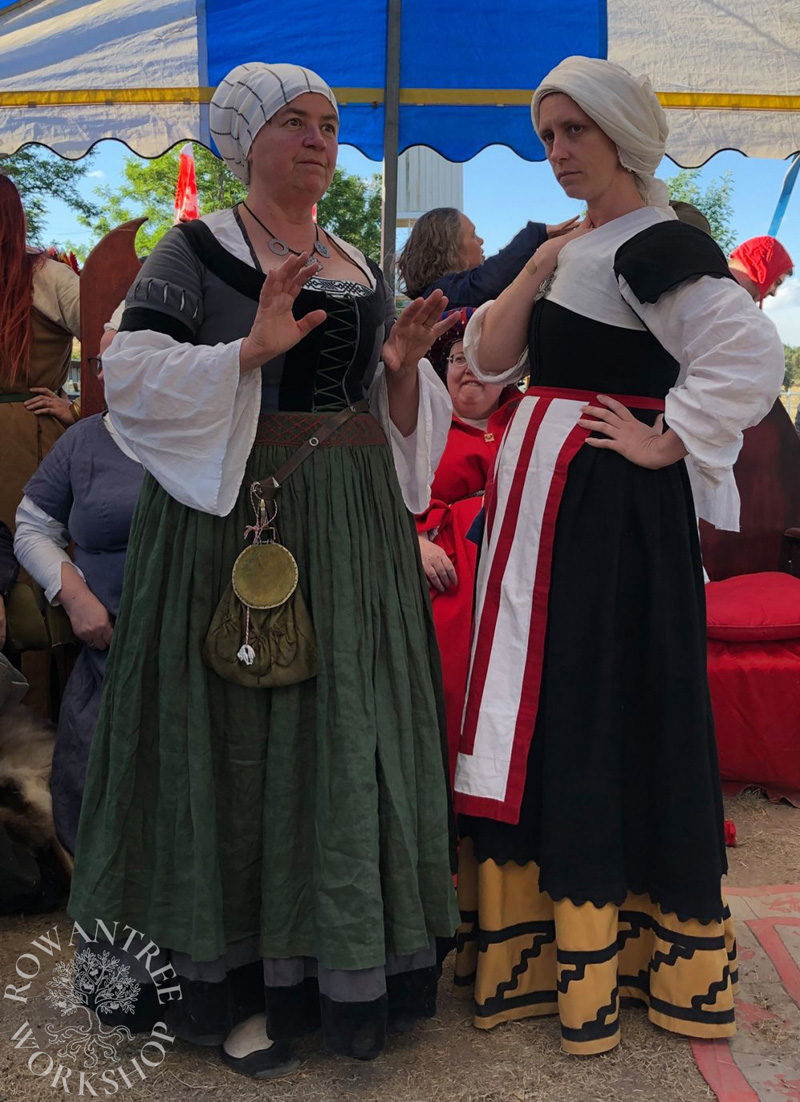A finely pleated green linen Halbschürze (skirt apron), suitable for a 16th century German woman of the middle class.
This style of apron was common in the German states in the early 16th century, worn as an overskirt by women of several classes. I’d wanted to make one for a while, and it made a good hand-sewing project for a week-long event.

Halbschürze literally translates as ‘half apron’, but it is actually a complete overskirt. It might be worn to dress-up the outfit or, as suggested in Textiler Hausrat (Zander-Seidel 1990), to act as a protective (and washable) cover over a hard-to-launder dress.
Design
Although there are no extant examples of these aprons, many examples appear in artwork, wills and sumptuary laws from 1510-1570. They were most commonly depicted on Bauer and Burgher women, but are occasionally seen on wealthier women too.
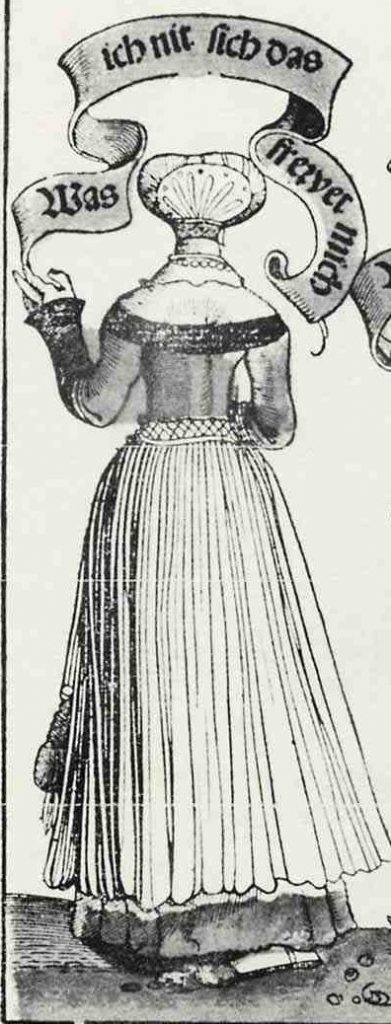
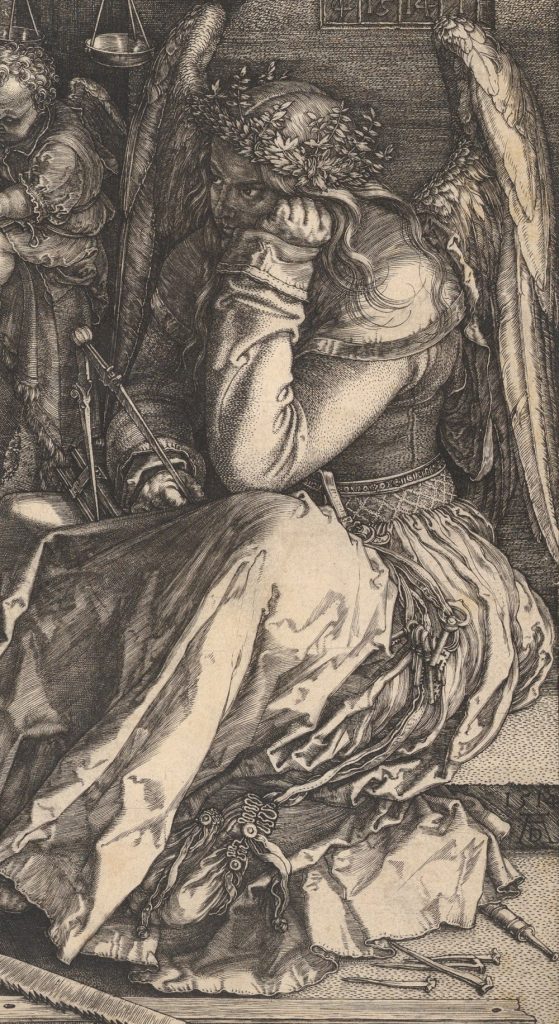
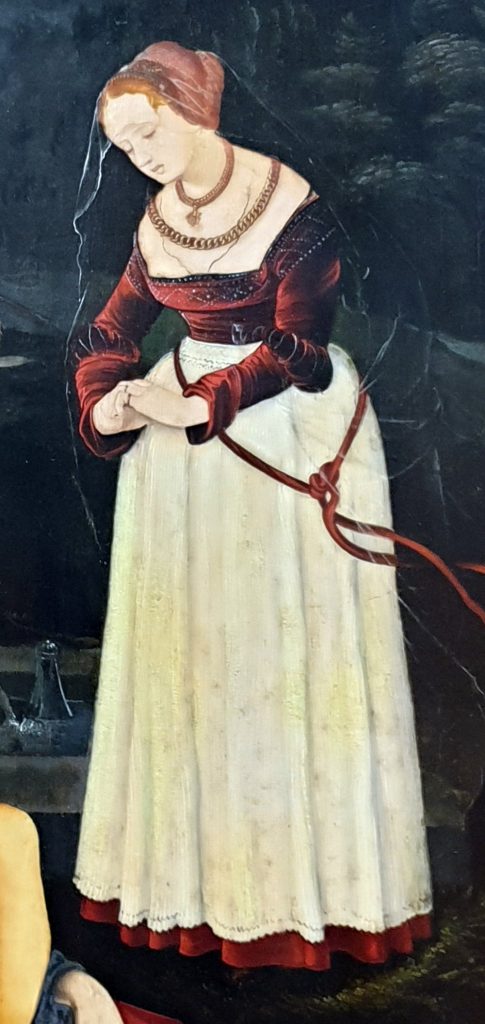
Photo: Robyn Spencer
The Halbschürze, like other aprons of the time, was usually made of linen or a linen/wool or linen/cotton mix. The most common colours were red, white and black, but green examples were known from wills. As the artwork shows, the fine pleats are held in place with decorative embroidery, usually in a
fretwork pattern, sometimes with horizontal rows above and below.
As can be seen in the examples above, the aprons are gathered with fine pleats into a small binding at the top. Fine pleating secured with gathering threads and then held with stitching on the front and/or back was a common technique in early 16th century Germany for shirts and aprons.
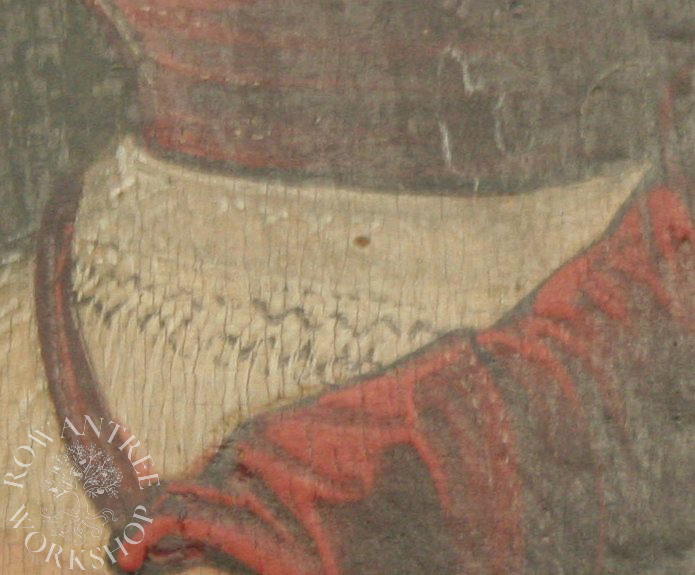
Photo: Robyn Spencer

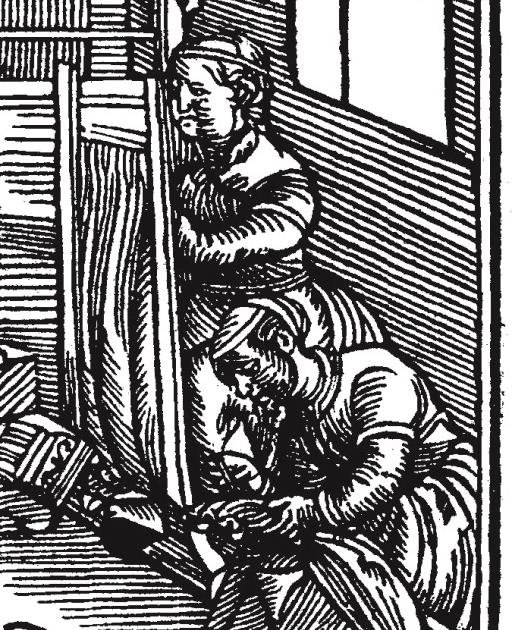
The woodcut above shows a woman pleating up a panel in a frame, stroking each pleat to ensure they remained on grain. The women beside her is using a chart to guide her embroidery on a pleated panel.
The detail from the shirt of Nils Sture from the 1560s (held in the Upsala museum), shows fine pleats held in place with a single line of smocking stitch in silk. The stem stitch is worked over each pleat to secure the row.
In her will of 1522 Anna Kress, the daughter of a patrician, left many embroidered aprons, including a red linen apron with white silk embroidery (Zander-Seidel 1990). It is clear that silk thread was used on these aprons, and that colour contrast was also in fashion.
Construction
My apron is made of three drops of 150cm wide fine green linen. With 4.5m of fabric to gather, I did not hand-pleat, but used a smocking machine to gather the top of each panel, with drawthreads every 2cm. I hand-seamed them together along the selvedges using green silk thread, leaving an opening at the top of one seam.
I gathered the pleats tightly to fit the measurement (it needed to fit over my Rock) and then bound the top edge with a narrow strip of the same linen, as seen in the Grein painting.
The pleats are held in place with a single line of stem-stitch in red silk thread along the top under the binding, and a double row at the base of the band. In between, I worked the typical diamond fretwork design, as seen in pictures above. My spacing on the fretwork is not perfect – I was judging it by eye as I sewed. (And since I sewed it at an event, there are no work-in-progress photos!)
Where possible, I secured the ends of the silk in the band or seams. Some ends are visible on the back, but these are not seen during wear.
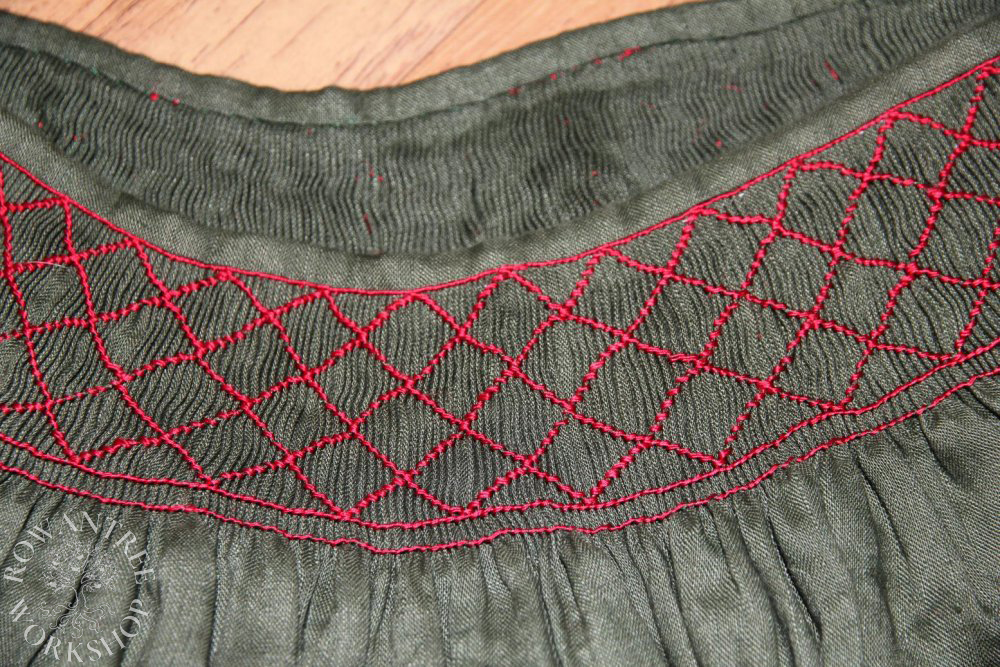
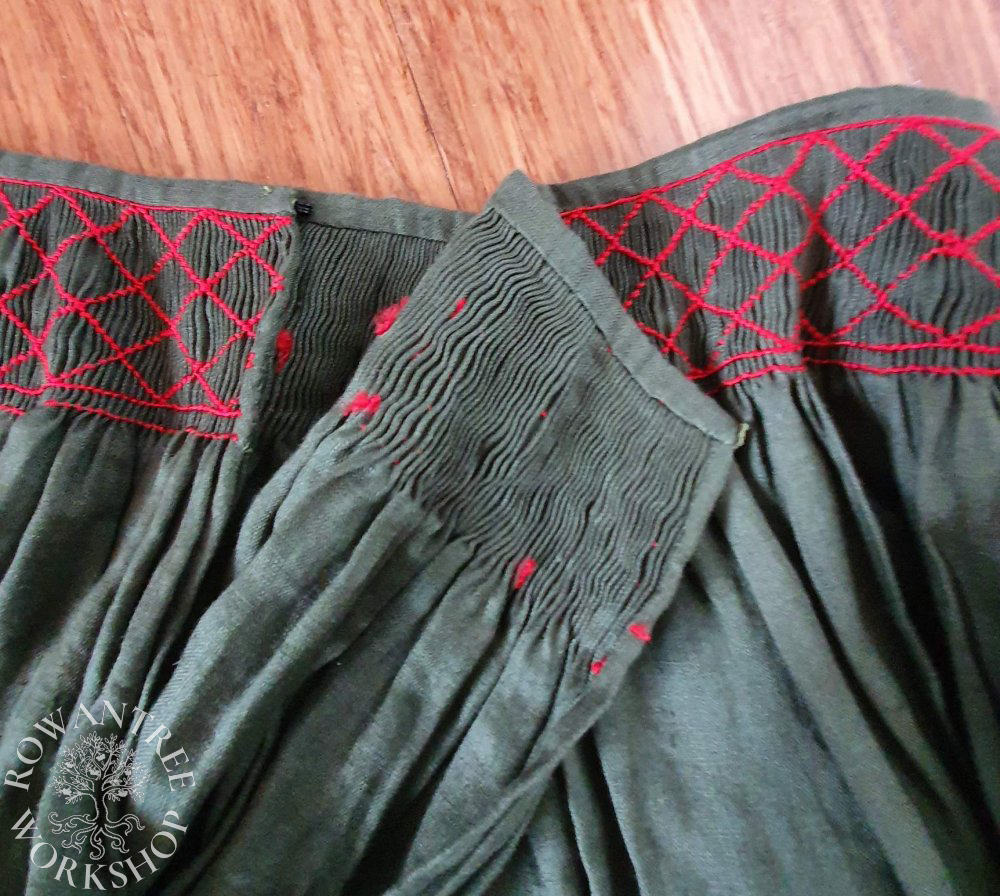
Once I had finished the embroidery, I removed the linen draw-threads from the smocking, so the apron could stretch gently over the Rock underneath.
I had not seen any evidence of ties or other closures, but a hook an eye seems a likely option. I hemmed the open slit and sewed a hook and eye at the bound top edge. I considered making a hemstitched bottom hem (as the Grein painting potentially shows) but 4.5 meters…. Reason prevailed and I sewed a simple hem using green silk thread.
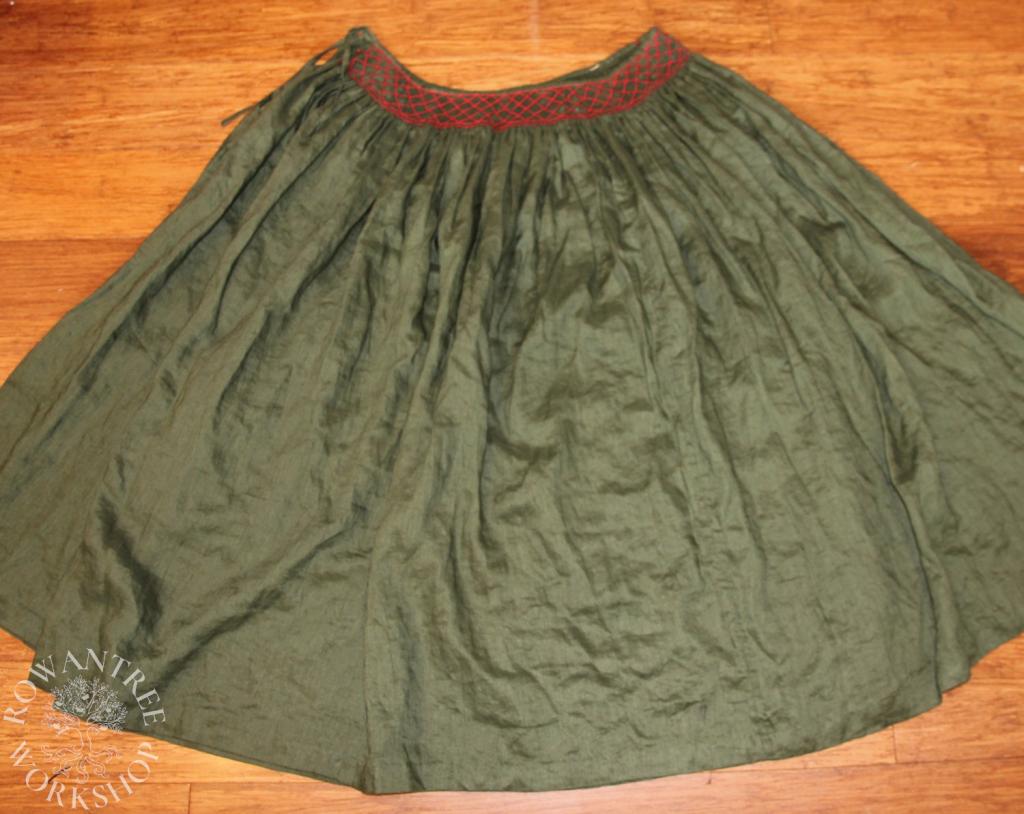
Although simple in execution, the apron took many hours to work. I am happy with the overall effect – the red silk contrasts nicely with the green linen and the apron looks good when worn with my early 16th century German garb.
